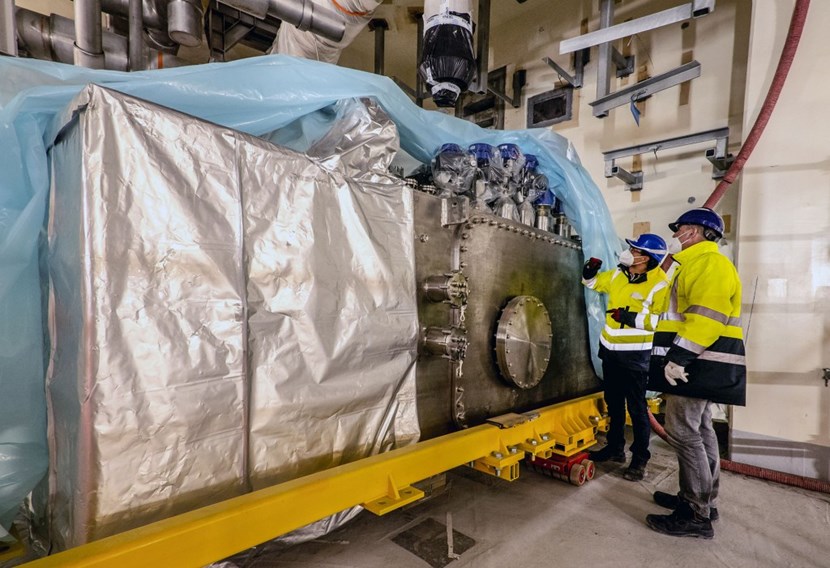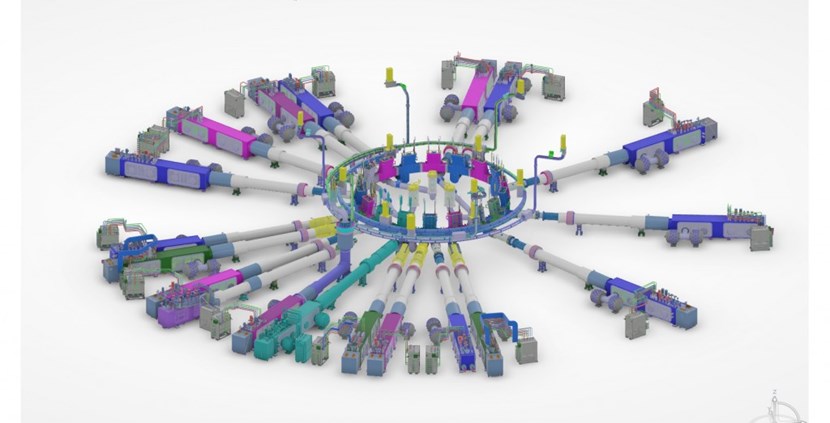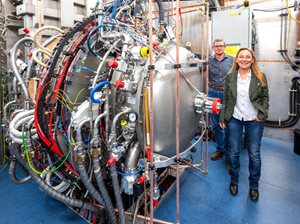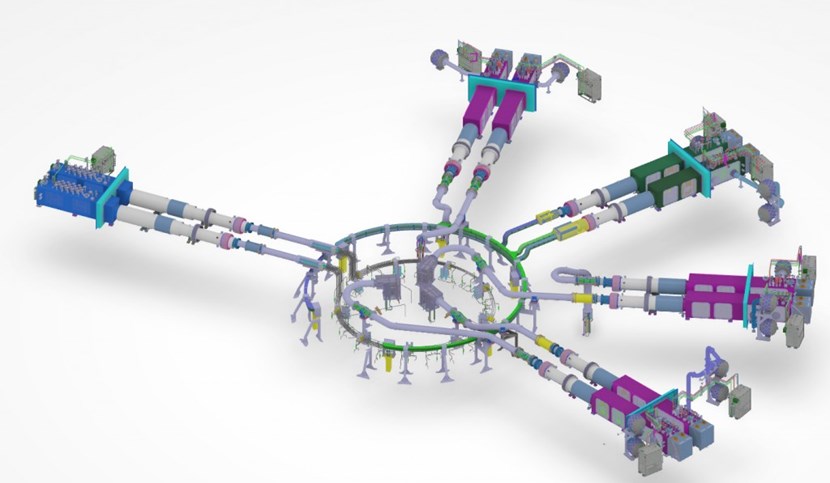
On January 26 2021, the coil terminal box of the feeder serving toroidal field coils #12 and #13 was placed into position in the gallery at the lowest level (B2) of the Tokamak Building. From left to right: ITER Feeders Mechanical Engineer Zhou Tingzhi and Feeders Assembly Responsible Engineer Giobatta Lanfranco.
From the outside, a magnet feeder looks like a large box from which a fat pipe emerges that decreases in cross section the closer it gets to the centre of the machine. Arranged in a circle at both the lower and upper levels of the ITER Tokamak, the 31 magnet feeders* are like giant syringes all aiming in the same direction.

Twenty-one feeders, out of a total of 31, will be installed in the lower basement level (B2) of the Tokamak Building. In green at centre-left is the feeder serving toroidal field coils #12 and #13.
Procured by China and manufactured at the Institute of Plasma Physics, Chinese Academy of Sciences (ASIPP), each feeder segment is delivered to ITER fully instrumented and, following onsite inspections and testing, ready for assembly—in all more than 1,600 tonnes of equipment and 93 large components plus auxiliaries.








